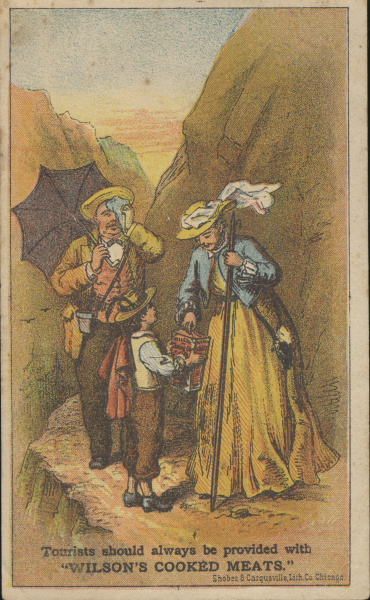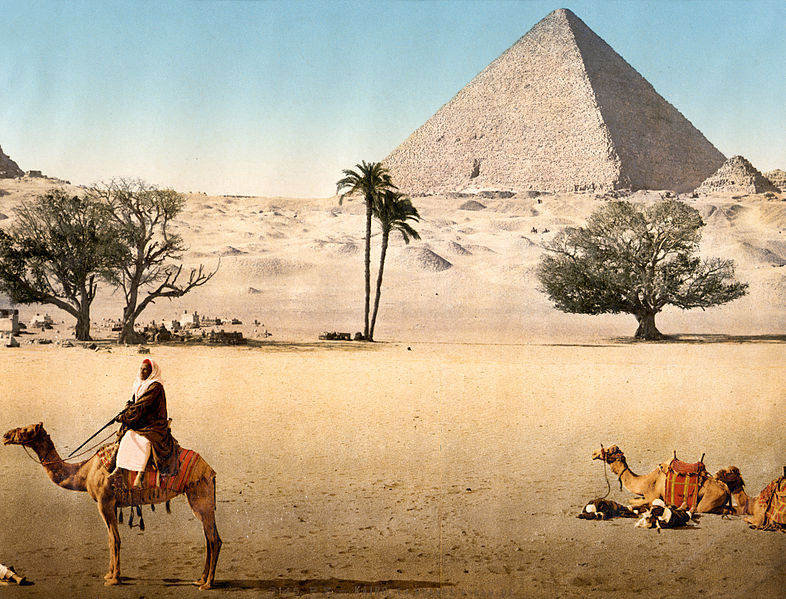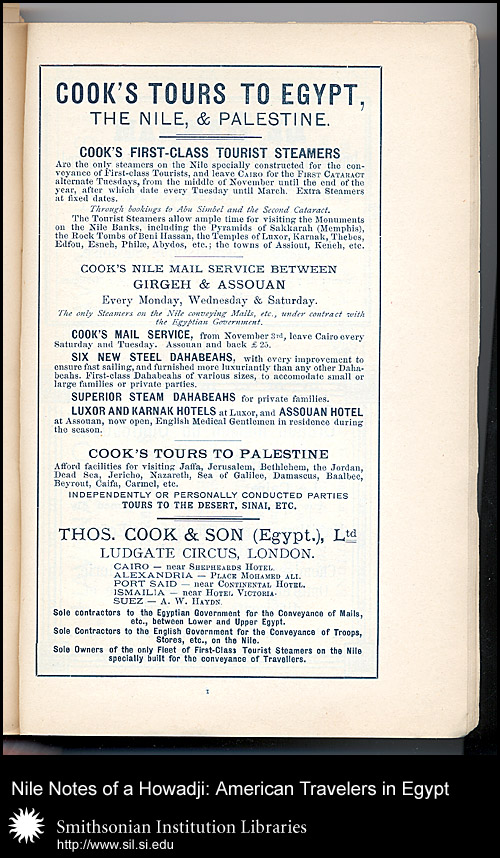
With summer nearly upon us (in the northern hemisphere), our thoughts turn to vacation planning. The Victorians liked to play tourist, too. One of the most popular tourism companies of the day was Thomas Cook and Son, Ltd.
Today’s post is a modification of one I wrote three years ago, when I was not as conversant in matters of copyright usage for photographs (which applies even to some 100+ years-old pics!), so I’ve corrected the issue here. Enjoy!
************************
Ever wonder what the phrase “I’ll give you the Cook’s Tour” means? You probably surmised that it was an actual tour company, and you would be correct. It’s still in operation today, in fact.
The Thomas Cook Tour Company (British) began in 1841 with some modest day trips, but by the death of the founder in 1892 (his son took over), it had grown to be a formidable influence on the tourism industry. One might say that it was the tourist industry. In addition to what made this company successful, I’m going to focus on one of its most popular and exotic tours at the time: Egypt.

Here are some interesting facts about the Cook’s Tour Company, around the end of the 19th century when the reach of the British Empire was most profound:

1. Cook was one of the first to successfully promote the tour “package,” where everything – food, lodging, transportation, entertainment, sightseeing – was included, for one flat price. The “Cooks Programme,” a printed brochure of tours, amenities list, and prices, was issued every year. This opened up new markets for customers among the middle class, and made travel much more affordable. Something all-inclusive is certainly handy when one is in Egypt, and unfamiliar with the languages and customs. Can you say “camel ride”?
2. Many of the tours were quite an operation in logistics. According to one source, Cook could “accommodate 1,000 tourists in Victorian luxury under canvas in the Holy Land, or convey Eastern princes across oceans and continents with all their panoply of servants, elephants and tame tigers” (Ken Anderson, “Tour of the Empire”). Love that. I’ll have to remember to bring my tame tiger with me on my next trip.
3. During this time, railways were built and extended along popular routes in the Empire’s holdings. Egypt is a great example of this, with the railway between Cairo and Luxor being the most convenient overland mode of travel by the turn of the century. The horseless carriage is still an oddity during this time, and one would have to wear a duster coat, goggles, scarf, etc, to ride in one.
4. One of the most popular tours was the trip up the Nile by steam-driven paddleboats. Entire local industries sprang up along the route to capitalize upon the influx of tourists: Egyptian farmers grew fresh produce for the prodigious amount of food the tourist ate at mealtimes; shop owners peddled their wares; locals were employed to cook and serve the food, make the beds, and attend to the tourists’ needs; and “battalions of Arabs waited ashore, ready to convey Cook’s sedan-borne expeditions into the desert” (Anderson).

5. As one might imagine, a lot of resources are needed to move this number of people in comfort. Part of what made Cooks such a successful enterprise were its holdings. The company owned its own luxury hotels in Luxor, a steamboat fleet, a shipyard, and a massive number of employees.

6. The importance of “branding”: the Cook name became synonymous with everything reassuring to the British traveler far from home: comfort, luxury, gentility, safety, and an understanding of British day-to-day habits and preferences. The tourist wanted a foreign experience, but not too foreign. So, even though the face of the porter looked exotic, the familiar cap or uniform would provide reassurance that the traveler was in good hands.

What do you think we have in common with the 19th century traveler, in terms of wants or needs? Do we seek familiarity in the midst of the unfamiliar? I’d love to hear from you.
Until next time,
Kathy



Well, except for the duster and the goggles, it sounds much like a journey one might take today. I love those all-inclusive package deals. Where do I sign up?
Fun stuff, Kathy. (As usual.)
Patricia Rickrode
w/a Jansen Schmidt
Yep, all-inclusive is the way to go! I get a kick out of those goggles, too, Patricia. I wonder what we consider ordinary today will be seen as incredibly backwards in a hundred years? 😉